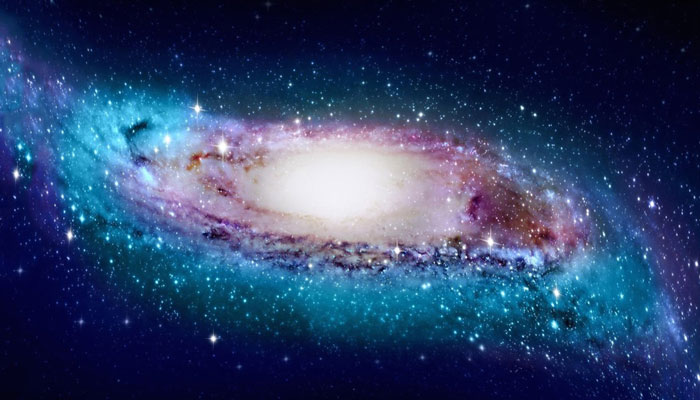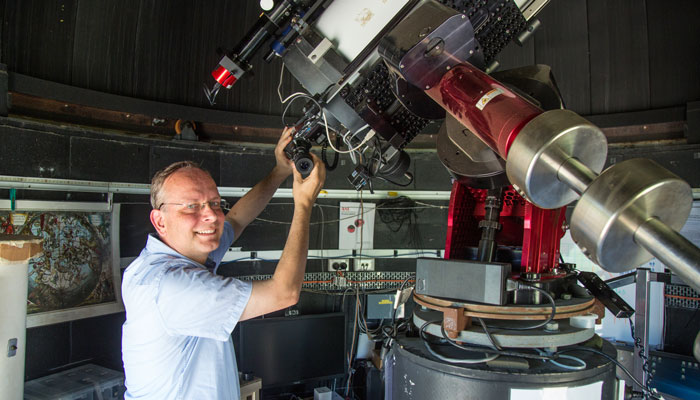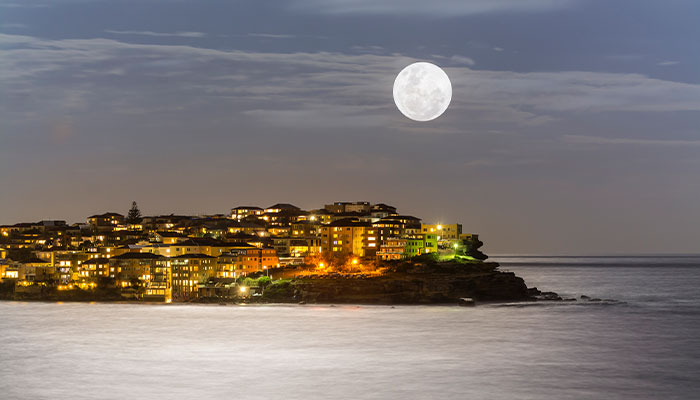There is a whole year of astronomical wonders ahead for 2021. With a bit of planning, it’s possible to watch the universe put on a show.
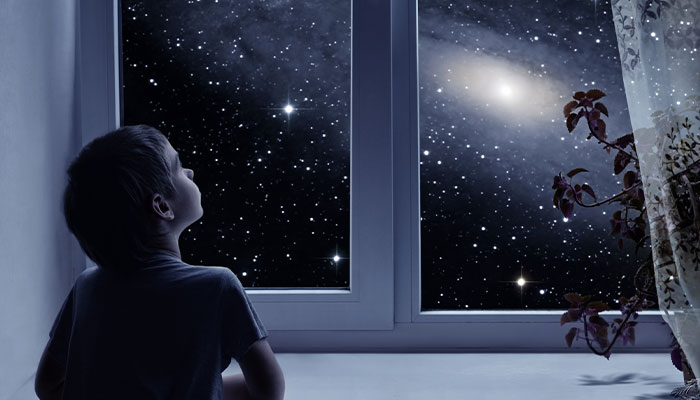
Eyes up: Plan ahead to make the most of 2021's astronomical events.
Professional astronomers will be observing these events, of course, but in far greater detail. Many of the world’s largest telescopes operate using vital components designed and manufactured by Macquarie University’s Australian Astronomical Optics division.
But amateur stargazers don't need giant telescopes to reap the night sky's rewards. These are the dates and events to mark in your diary for 2021.
Supermoon
27 April
On Wednesday, 27 April, we’ll see the first of two supermoons for 2021. A supermoon is a full moon – or a new moon – that nearly coincides with perigee, the nearest the Moon comes to the Earth in its elliptic orbit.
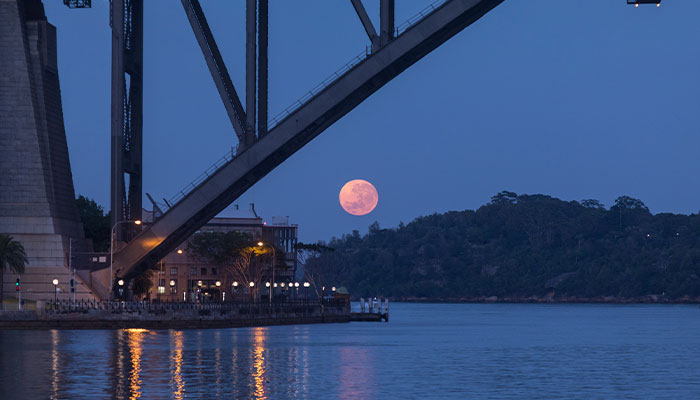
Close up: A supermoon sets over Sydney, framed by the Harbour Bridge.
This makes the Moon look larger and brighter than usual when viewed from Earth. You might see it called a super pink moon, although, misleadingly, it’s not really pink.
The name came about because US astronomers use Native American names for all full moons, and a pink North American wildflower called Phlox subulata blooms in April.
Eta Aquarids meteor shower
7 May
Friday, 7 May might be a good time for a weekend break far away from city lights. This date marks the peak of the Eta Aquarids meteor shower, one of the best of the Southern Hemisphere, with dozens of meteors per hour visible from a dark place.
This is a famously fast-moving meteor shower, travelling at about 66 kilometres a second into Earth's atmosphere. Fast meteors can leave glowing 'trains', incandescent bits of debris that make for a spectacular light show.
Every time Halley returns to the inner solar system its nucleus sheds a layer of ice and rock into space.
The pieces of space debris that interact with our atmosphere to create the Eta Aquarids originate from Halley’s Comet. Every time Halley returns to the inner solar system its nucleus sheds a layer of ice and rock into space.
The dust grains eventually become the Eta Aquarids in May (and the Orionids in October) if they collide with Earth's atmosphere.
For the best viewing, find an area well away from city or street lights. Bring a sleeping bag or a blanket. Lie flat on your back and look up, taking in as much of the sky as possible. After about 15-20 minutes in the dark, your eyes will adapt and you will be able to see even faint meteors. There’s plenty of time – the show lasts until dawn.
Supermoon and total lunar eclipse
26 May
Wednesday 26 May brings the second of 2021’s supermoons – this time a super flower moon, which is again misleading. No flowers are involved, except for the North American wildflowers blooming abundantly around this time.
But this time there’s a twist, because a much bigger astronomical event will obscure the view of the super flower moon.
Starting from 6.47pm, and peaking at 9.18pm, there will be a total lunar eclipse. This means the super flower moon will also be a blood moon: the Moon appears red when it is obscured by Earth’s umbra.
Mars crossing
23-24 June
On 23-24 June, Mars crosses in front of the Beehive Cluster in Cancer. This can be viewed with binoculars or low-magnification telescopes. The Beehive is a star cluster which can only just be seen with the naked eye. It looks like a little fluffy cloud.
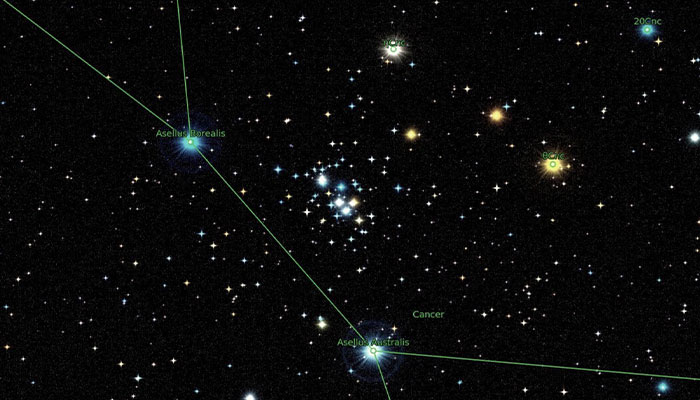
Mars ahead: The Beehive Cluster in the Cancer constellation, which can be viewed with binoculars.
When you look at the Beehive, also known as M44, you see stars that are nearly 600 light-years away.
There are about a thousand stars in the Beehive, some similar to the Sun. Many are red giants and white dwarfs, which are older than the rest of the stars in the cluster. The cluster itself is about 600 million years old.
Planetary conjunctions
June-July
On 13 July, there’s an astronomical event at a convenient time. Venus and Mars will be 0.5 degrees apart on the western horizon after sunset. All you need to do is find the Evening Star, look about the width of a full moon from it, and Mars will be there.
It will be worth braving the cold in August. From the 17th to the 21st, Mercury and Mars will be close together in the western sky (look at around 15 degrees – a fist and a half – over the horizon at sunset).
Tiny Mercury will be much brighter than Mars, as the Red Planet will be very far from Earth.
Comets and meteor showers
August-November
From late August to early September, Comet 6P/d´Arrest will be in the constellations of Ophiuchus and Sagittarius. In dark places, it might be visible with binoculars, and definitely will be with a small telescope.
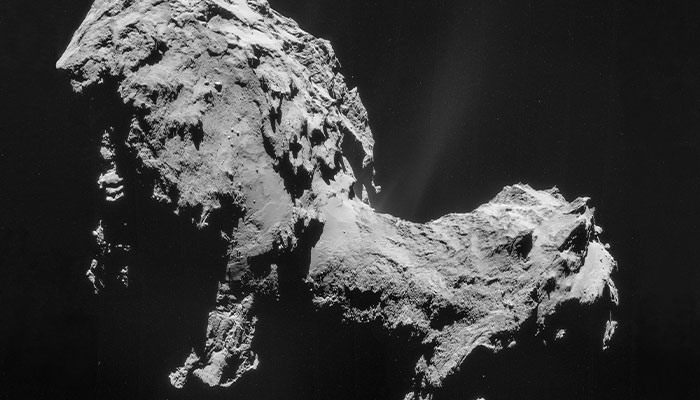
Rock star: Comet 67P/Churyumov-Gerasimenko will be visible around Gemini. It found fame when the Rosetta mission landed a rover on its surface in 2014.
The morning of Friday 22 October is the peak of the Orionids meteor shower (the cousin of the Eta Aquarids, and also derived from Halley’s Comet), with 25-30 meteors an hour visible from a dark place.
Late October to early November brings another comet into viewing range. Comet 67P/Churyumov-Gerasimenko will be around Gemini. You might recall this comet from the news – it was the one visited by the European Space Agency’s Rosetta mission. Rosetta landed a rover, Philae, on its surface in 2014.
Micromoons and a planetary line-up
19 November, 30 November, 19 December
With two supermoons in 2021, the latter part of the year brings micromoons on Friday 19 November and Sunday 19 December.
As the name implies, these are the flipside of supermoons – the Moon is at its apogee (the farthest point from Earth in its orbit) and appears smaller than usual.
On Tuesday 30 November, Venus, Saturn and Jupiter will be in a straight line and more or less equally spaced apart in the evening sky, crossing Capricornius and Sagittarius. This will be visible with the naked eye – no telescope or binoculars needed.
Solar eclipse
4 December
On Saturday, 4 December there will be a total solar eclipse visible from Antarctica. Obviously, this may prove difficult to get to, but you can observe a partial eclipse from Hobart, and a smaller partial eclipse from Melbourne.
The rest of Australia misses out until July 22, 2028. On that day, totality will stretch across Australia, from the top of Western Australia down through New South Wales, passing directly over Sydney.
Senior lecturer Dr Angel Rafael Lopez Sanchez is a Macquarie University/Australian Astronomical Optics astronomer and astrophysicist.
Macquarie University’s Australian Astronomical Optics division is a world leader in developing innovative instrumentation for ground-based telescopes. Spectrographs designed by the team at AAO are analysing the light from stars more than 50 light years away to detect the faint gravitational wobble that indicates the presence of orbiting planets. Their innovative Starbug fibre-positioning robots are installed on the Schmidt telescope at Siding Springs and will be an integral part of the Giant Magellan Telescope currently under construction in Chile.

